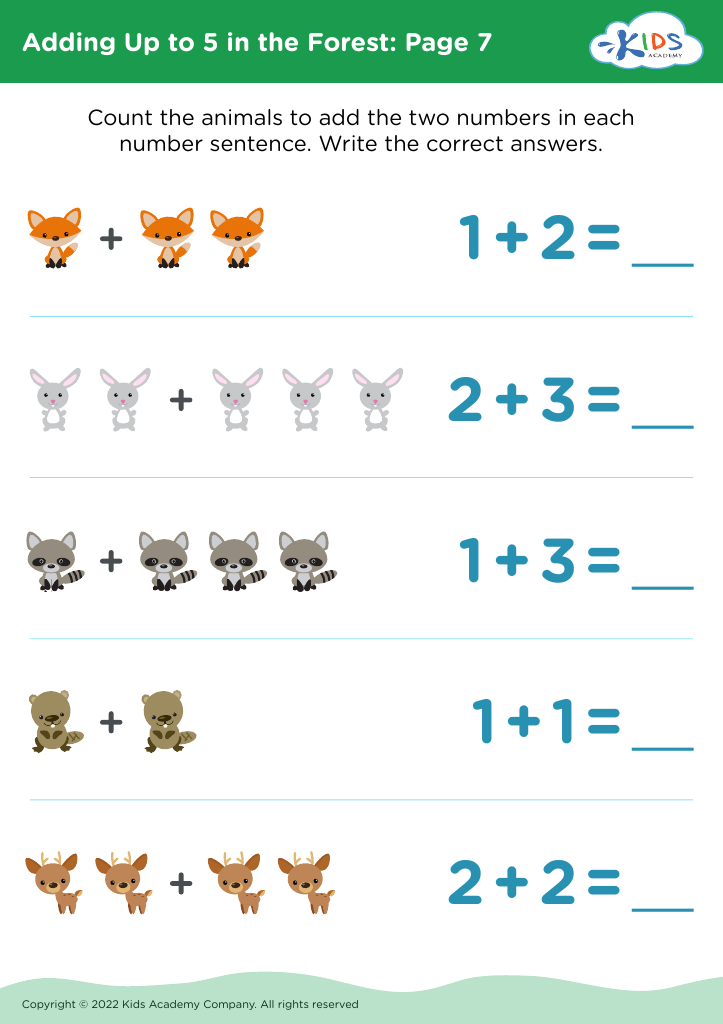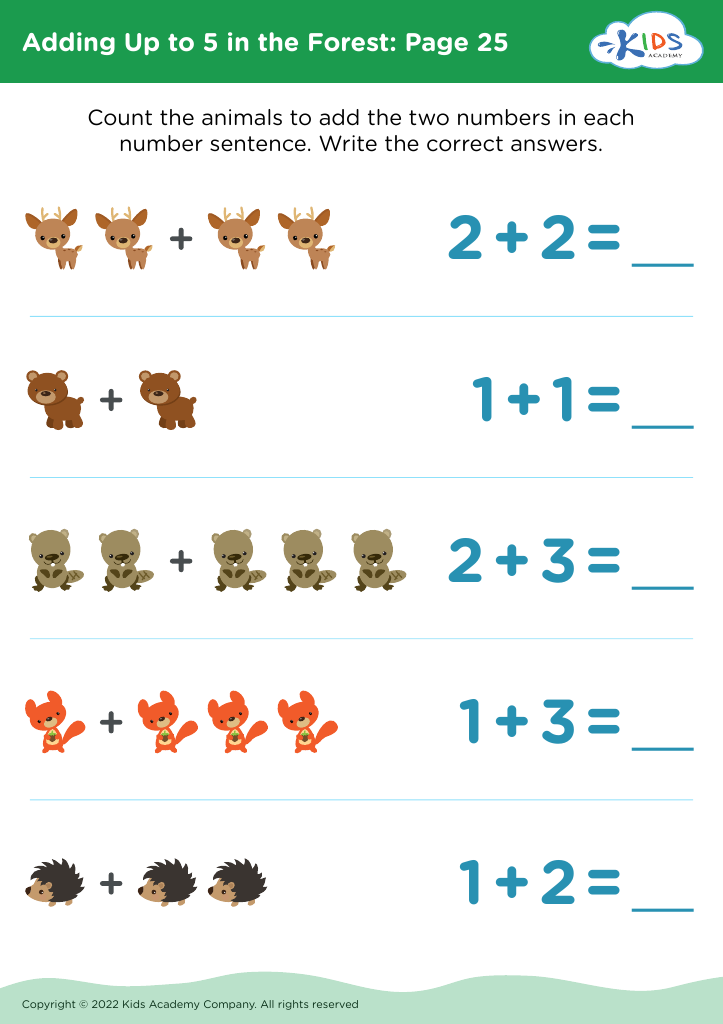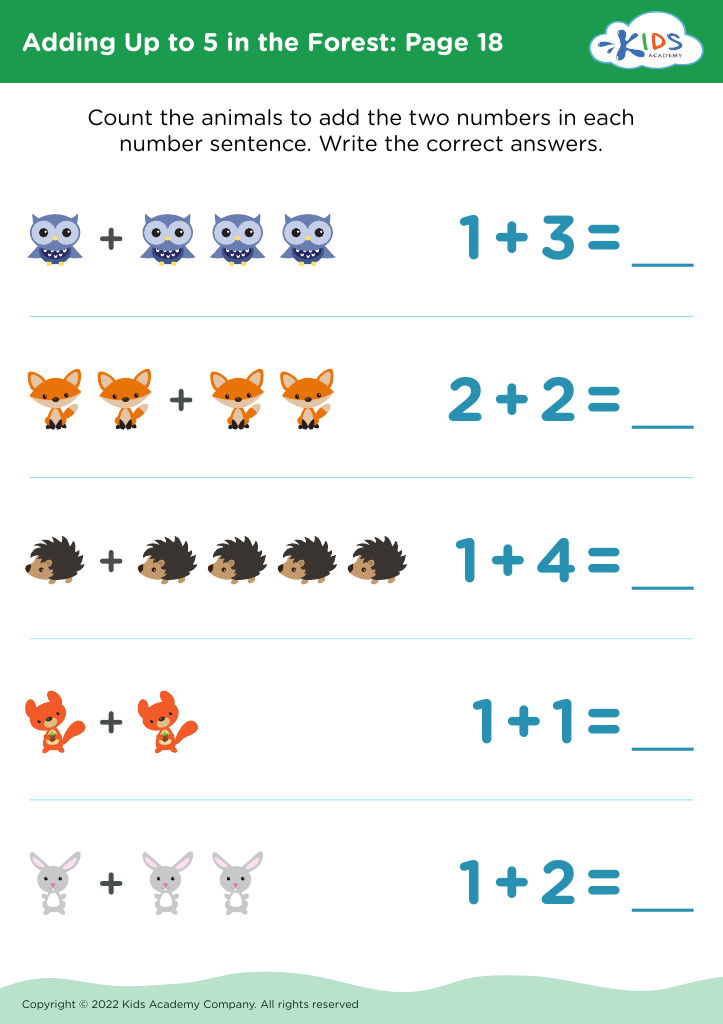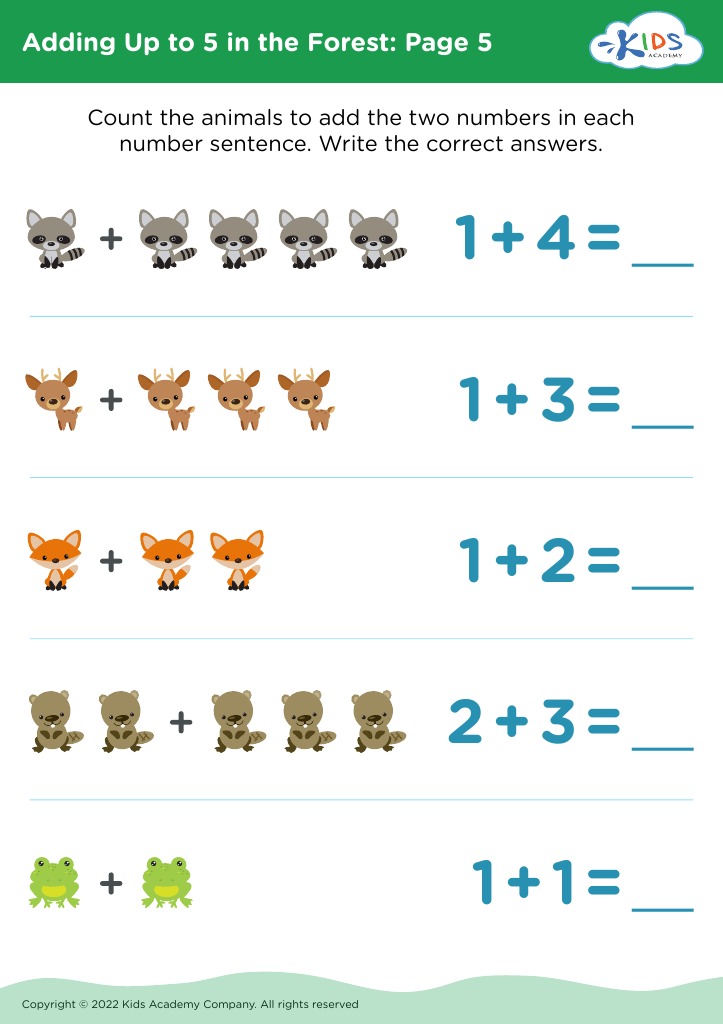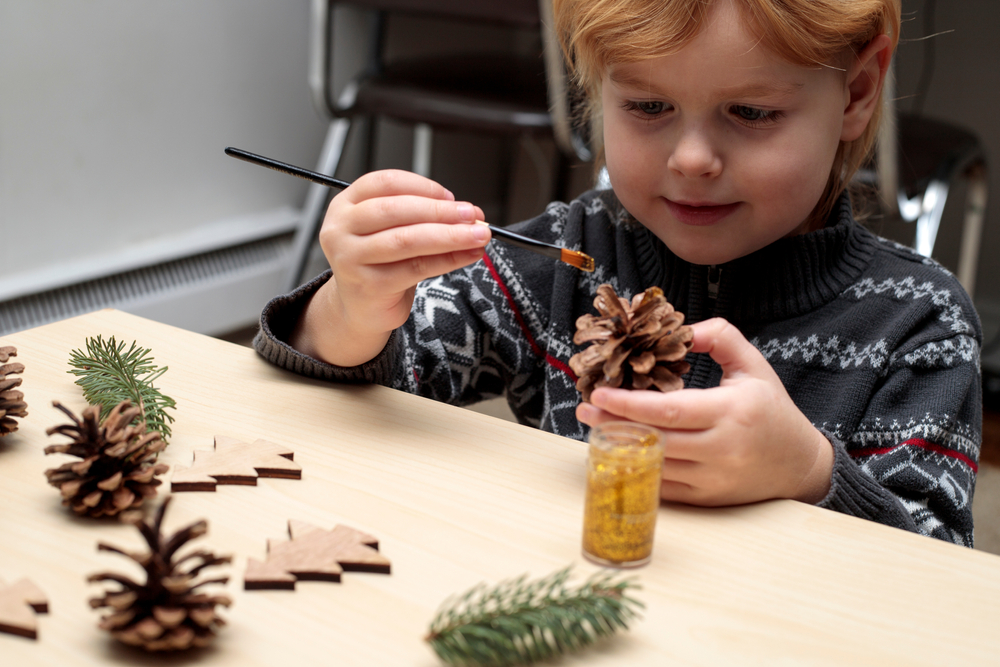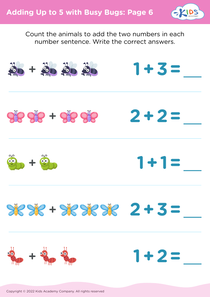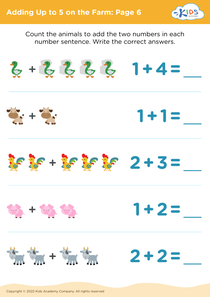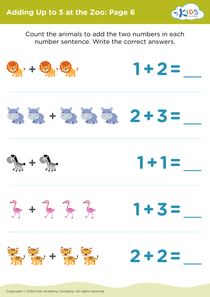Understanding Quantities Adding in the Forest Worksheets for Ages 5-9
6 filtered results
-
From - To
Introducing "Understanding Quantities Adding in the Forest Worksheets for Ages 5-9" – a fun and educational resource designed to enhance your child's math skills. These engaging worksheets incorporate charming forest-themed graphics to make learning addition enjoyable. Children will develop a solid understanding of quantities and sums while navigating various activities tailored to their age group. Perfect for both classroom and home use, these printable worksheets help foster a love for mathematics through interactive and visually stimulating exercises. Boost your child’s confidence and proficiency in math with our expertly crafted worksheets, ideal for young learners eager to explore addition in a playful forest setting.
Understanding quantities and basic addition is a foundational skill crucial for young children aged 5-9, and using engaging themes such as a forest can significantly enhance their learning experience. At this developmental stage, children are naturally curious and are developing their cognitive abilities to grasp abstract concepts. Tying math to a relatable context like a forest—full of animals, trees, and other natural elements—not only captures their interest but also makes learning fun and meaningful.
Quantitative understanding begins with recognizing the amounts and gradually extends to more complex operations like addition. By leveraging a forest theme, educators and parents can craft stories and problems that incorporate counting animals, adding groups of birds or leaves, and other imaginative scenarios. This method enables children to visualize and contextualize mathematical concepts in a familiar, engaging setting, fostering a positive attitude towards math.
Moreover, early proficiency in quantities and addition lays the groundwork for more advanced mathematical concepts that children will encounter later. It helps to develop critical thinking, problem-solving skills, and a comprehension of patterns, all of which are essential across various aspects of life and future academic subjects. Therefore, integrating these core math skills with interactive, nature-based themes is an effective educational strategy.
